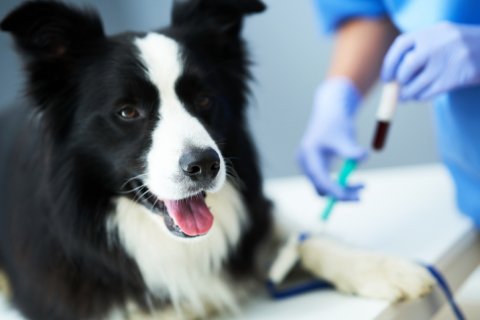New biomarker from blood can detect cancer in dogs
Cancer cells secrete a specific ribonucleic acid (RNA). This is done through small cellular vesicles that circulate in the body. This RNA turns out to be a new biomarker to show cancer and can be detected through a standard blood sample. These liquid biopsies are an attractive alternative to tissue biopsies, as they can be taken without entering the body, for example through laparoscopic surgery. Researchers from Utrecht University demonstrated this in dogs with cancer. The article was published in the journal Veterinary and Comparative Oncology.

For centuries, pieces of tissue (biopsies) have been taken from people (and also from animals) to see if cancer cells are present. This remains the only method of definitively determining whether someone has cancer, but there are also many disadvantages to tissue biopsies. To begin with, it is a snapshot that gives only a limited picture of the tumour. The oncologist should actually take several biopsies, not only at different points in the tumour tissue, but also at different times. Furthermore, surgical complications may arise and the removal of tumour tissue causes discomfort to the patient. So biopsies are rather impractical for monitoring tumour development or seeing if a treatment is working.
Promising RNA
A multidisciplinary team of veterinary oncologists, cell biologists and cancer researchers from Utrecht University (Faculty of Veterinary Medicine), including Anneloes Andriessen, Laura Bongiovanni, Sara Galac, Esther Nolte ’t Hoen, Bart Westendorp and Alain de Bruin, investigated four possible RNAs to see if they could help detect cancer. One of them, the CDC6 RNA, appears to be able to detect tumours.

"This is very promising, as this biomarker can detect different types of cancer at different sites in the body," says De Bruin, Professor of Pathobiology and co-author. "Our team investigates which molecules are important for cell division. We have discovered that the CDC6 molecule occurs more often in tumours that grow rapidly. And also that this molecule is secreted via small cellular vesicles and can be measured in the blood. In follow-up studies, we are investigating whether this biomarker can be used in humans and cats and can demonstrate the success of cancer therapy. That would be fantastic, of course."

